In the middle of a warbler migration in North America
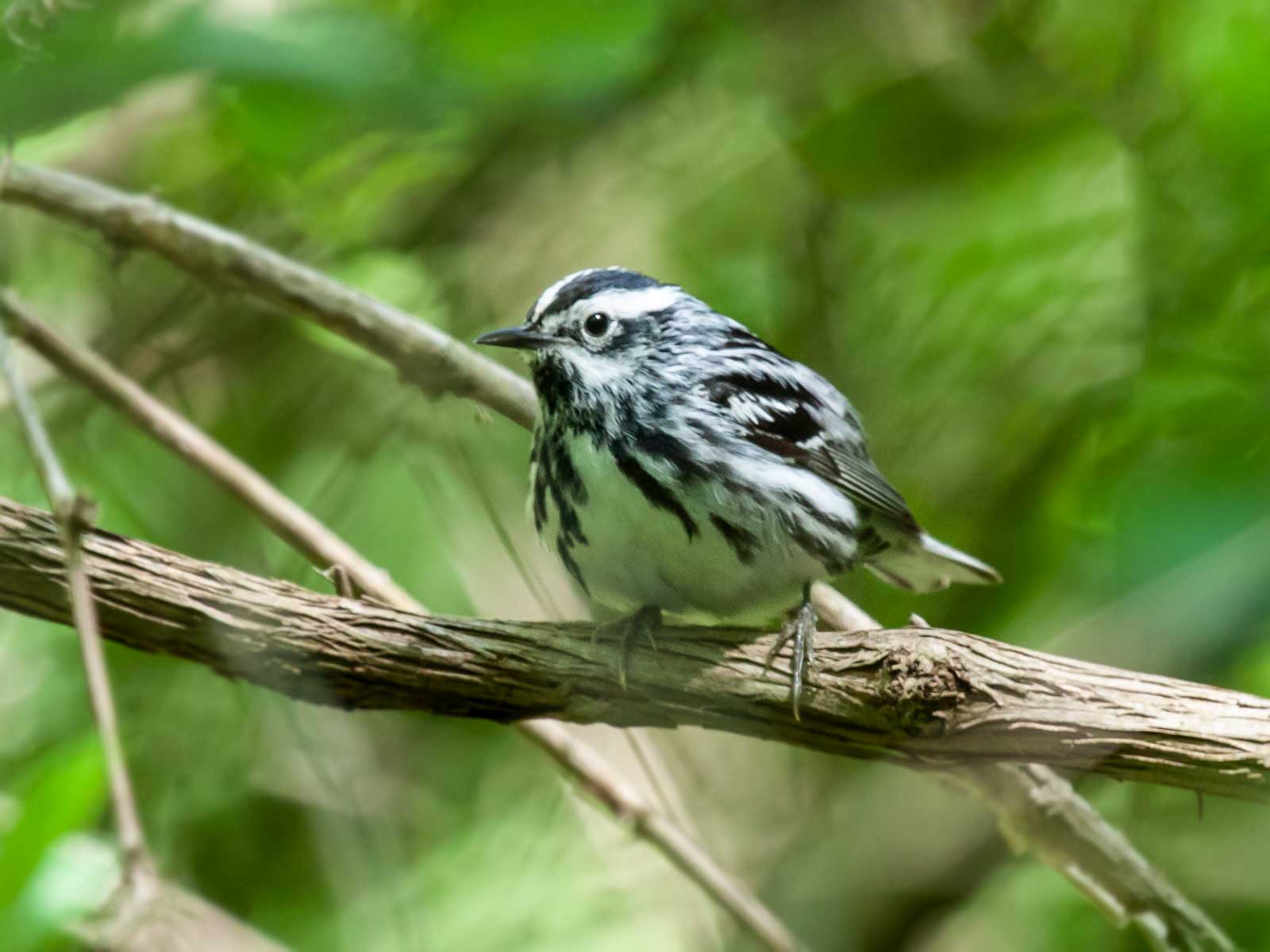
Warblers are small insect eating birds which are super active. When there are a group of warblers they make the forest feel alive with their movement and their constant chirping. The Black-and-white-warbler warbler is one such super active bird.
Usually the blogs are written by Mathi and I am the “picture” person. This one though, I had to write because of some reasons I ended up solo for this delightful experience. Seasonal migration of birds is one of the world’s most beautiful natural world spectacles. While mass migration of waterfowl and wading birds catch the eye of most people , migration of song birds are much less obvious because of their size and geographical spread. We wanted to see this spectacle in person ever since we came to know about the concept of “fallout” during migration. We came to know about fallout from the most unlikely of sources. Not in a journal but in a movie !
There was a movie about birding in the year 2011 called “THE BIG YEAR” and in the movie there was a reference about “fallout” where migrating birds tend to come down on a small patch of land. We were intrigued by it and we even questioned whether it was real. However we thought it would be wonderful if it was real and if we were able to witness it. Having held on to the concept, we researched further and found certain migration routes and stopover areas across America. Some of those areas were quite accessible for us which was a big help in our search.

Magee marsh wildlife area might be small in size but is a important migration stopover. The migration pathways of America mainly the Mississippi and Atlantic flyways meet at this point and hence almost all of the Arctic birds use this place during migration.
What was even more exciting was that, in one of the locations warblers were the main participants rather than the waterfowl.
We had been birding for a few years by this time and like many starters we tend to skip the warblers part. We just say “if it is not green then it must be greenish”. I assume birders will know about the pun I am making regarding the warblers. One of the reasons for the joke is that warblers are indeed hard to identify and they are often very quick for even photographing. Adding to the confusion is the fact that, they are most often seen in India in their non breeding plumage, in which they all look the same. I particularly like the green humor cartoon about identifying warblers.
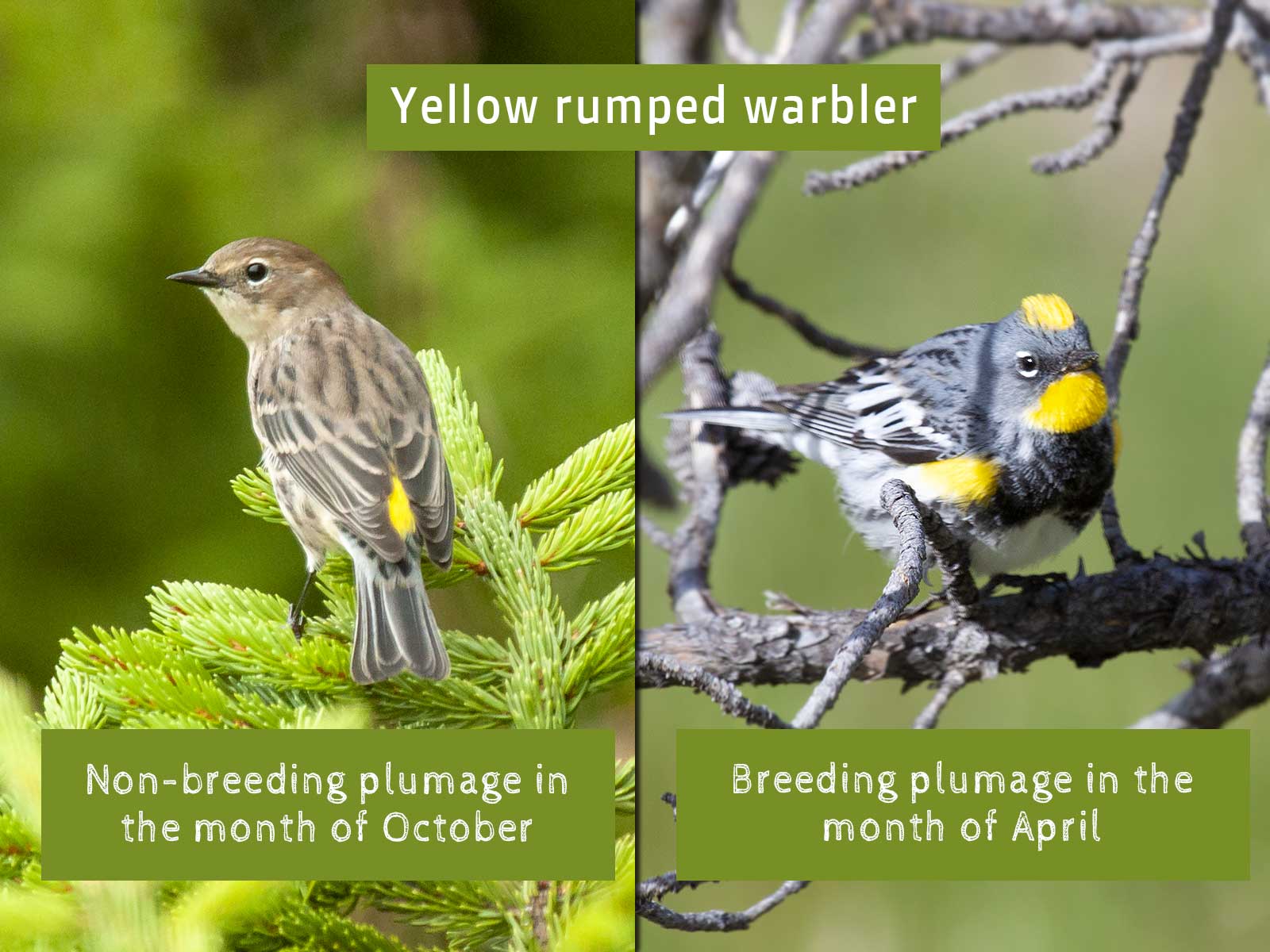
Warblers are more colorful when are they in their breeding plumage. Their entire plumage changes to an extent that one will not believe that they are the same bird.
So we always tend to tell ourselves, if only we can see them in breeding plumage then we can identify them easily. Now that we were in US we had the opportunity to see them in breeding plumage as most of the warblers breed in the Arctic regions and pass through US with their breeding plumage intact. Obviously these are different warblers than the ones found in India but finally we could see some birds in their breeding plumage. In that spirit I am going to limit this post to only warblers and I will not indulge in showing the other birds which joined the party on that day.
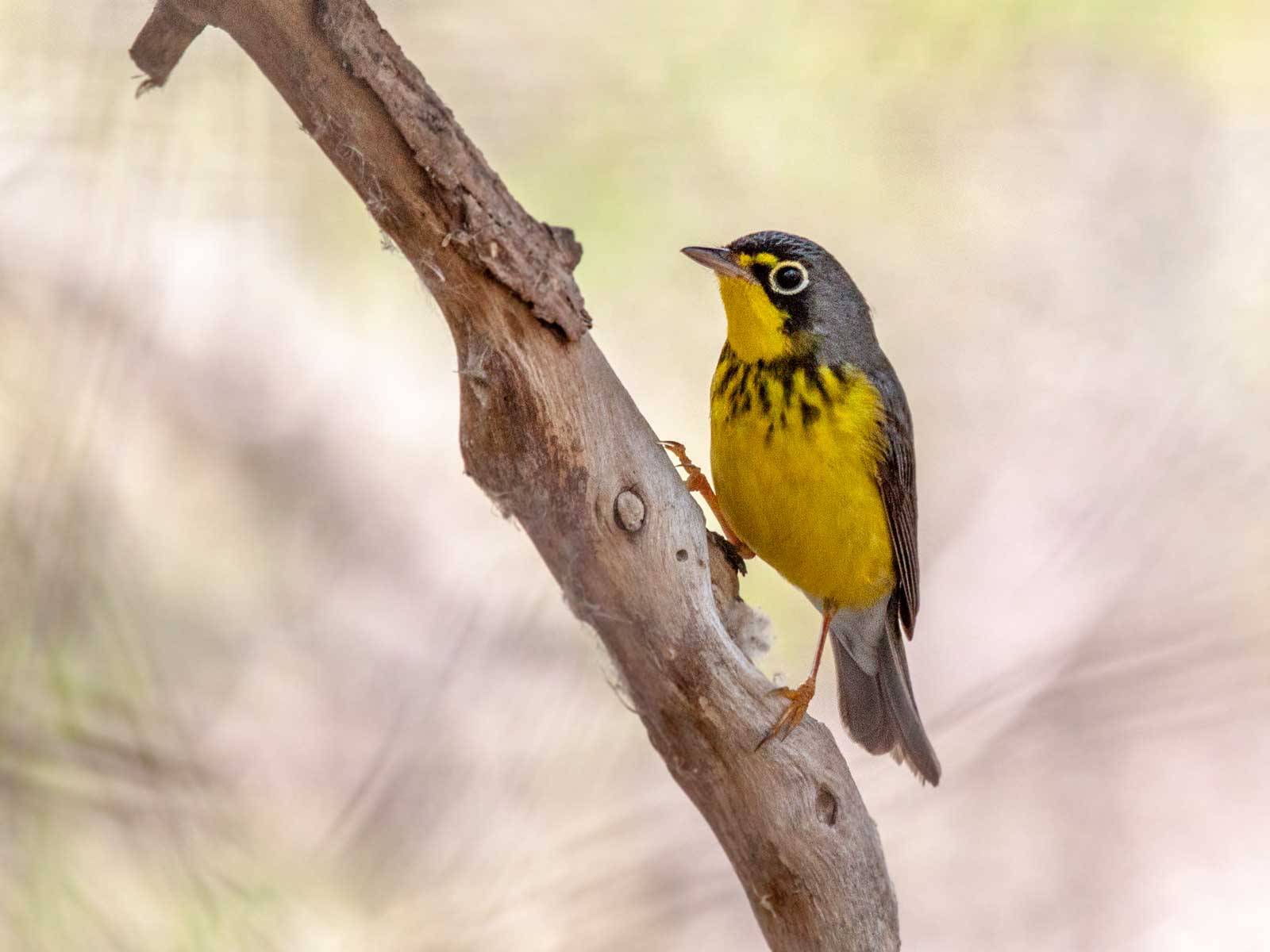
Canada Warbler was one of the most beautiful warblers that I spotted on the day. These little beauties travel until the Amazon and return back to North America for spending the summer and breeding.
Magee marsh wildlife area in Ohio
So months in advance (during winter) , we had planned to intercept their migration path and see them in all their glory and experience the natural world carnival. We shortlisted the Magee marsh wildlife area in Ohio as it was smack in the middle of a path and was an important stop over for the migrators. The refuge has wetlands and patches of forest trees with a boardwalk in the middle of it. We had first visited Magee marsh wildlife area in July the previous year when there was no migration activity but we noticed that all the sign boards there, only referred the migration spectacle. So with Magee decided , the next problem was timing the visit. We can predict the month but the days could be any day. They tend to migrate in a group and within a day or so, they move on.
So in anticipation, we made three visits in the month of April but with no luck. There were birds passing through but nearly not that much to call it a migration hotspot.
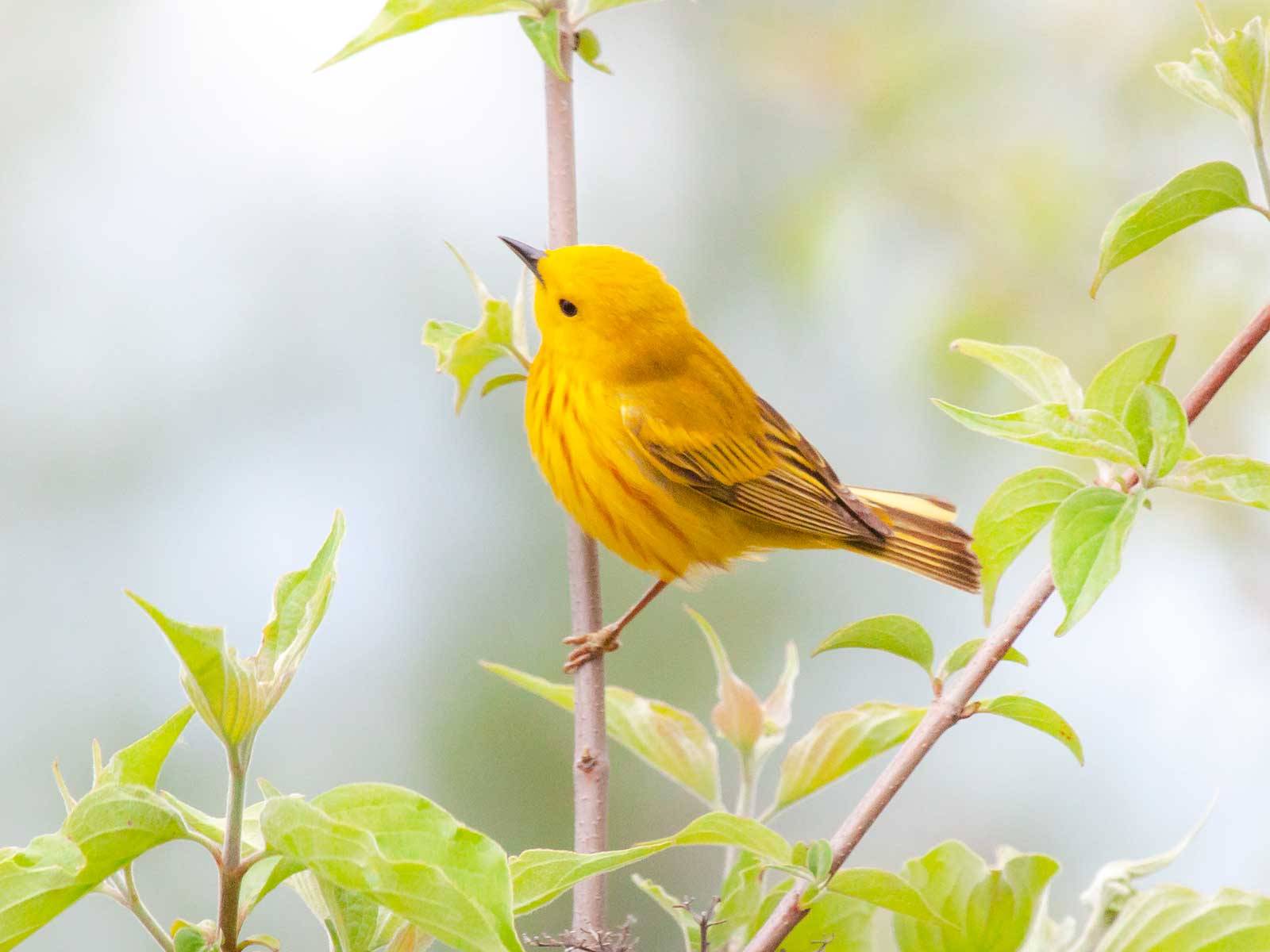
Yellow warblers are literally little tennis balls bouncing around. They are super active and vivid to look at.
We decided to keep on trying and it was in one such attempt , on the fourth try that I landed smack in the middle of something. I have never witnessed so many birds around me. It was not like a murmuration where lakhs of birds fly together, this was different. The little birds, hardly 10 -15 cms in size were everywhere.
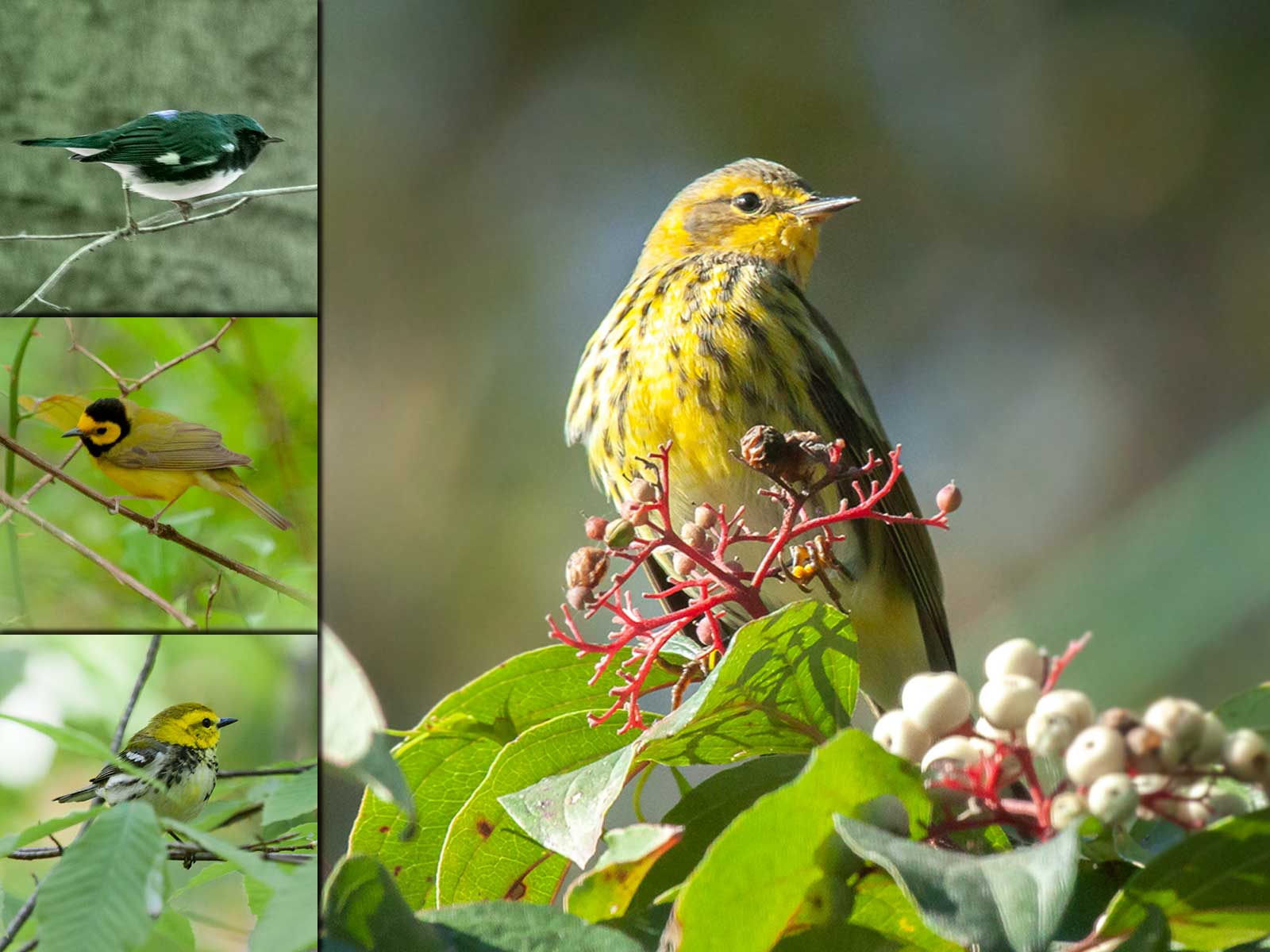
From top left to down : Black-throated Blue Warbler , Hooded Warbler , Black-throated Green Warbler Larger image : Cape may warbler
They did not mind me at all. They were so busy that they simply ignored me and went about searching for insects to get a quick refill before moving on. They were so quick that getting a picture was turning out to be a nightmare. One second there was Prothonotary warbler and in the next second in the same spot there would be a Backburnian warbler. I tried taking a video but that also turned out to be a futile attempt. I just went to a small corner and then sat for a few moments to soak it all in. The ambiance was superb with bird calls everywhere. I am not an expert in identifying bird calls but when the birds sing sitting in front of you , you feel like you understand them.

Prothonotary Warbler is my favorite for the day probably because it sat next to me and started singing. They are absolutely gorgeous and have a sweet voice too. They are one of the few warbler species which nest in tree holes.
It was an experience of a lifetime !
I walked around the boardwalk for several times and every time there was a new warbler species.
In between all the warblers there were ground thrushes too, which were also migrating. Everyone of them were having a different call and the sound was exhilarating. There were several birders on the same path and it was like a carnival of sorts. I could still remember an elderly person sitting alone with binoculars and watching birds with a happy smile. He did not carry a camera nor was he with a bird book. I assume that we was enjoying the presence of birds. I silently wished I could soon reach that stage where I could remove the camera standing as a distraction between me and the birds I love.
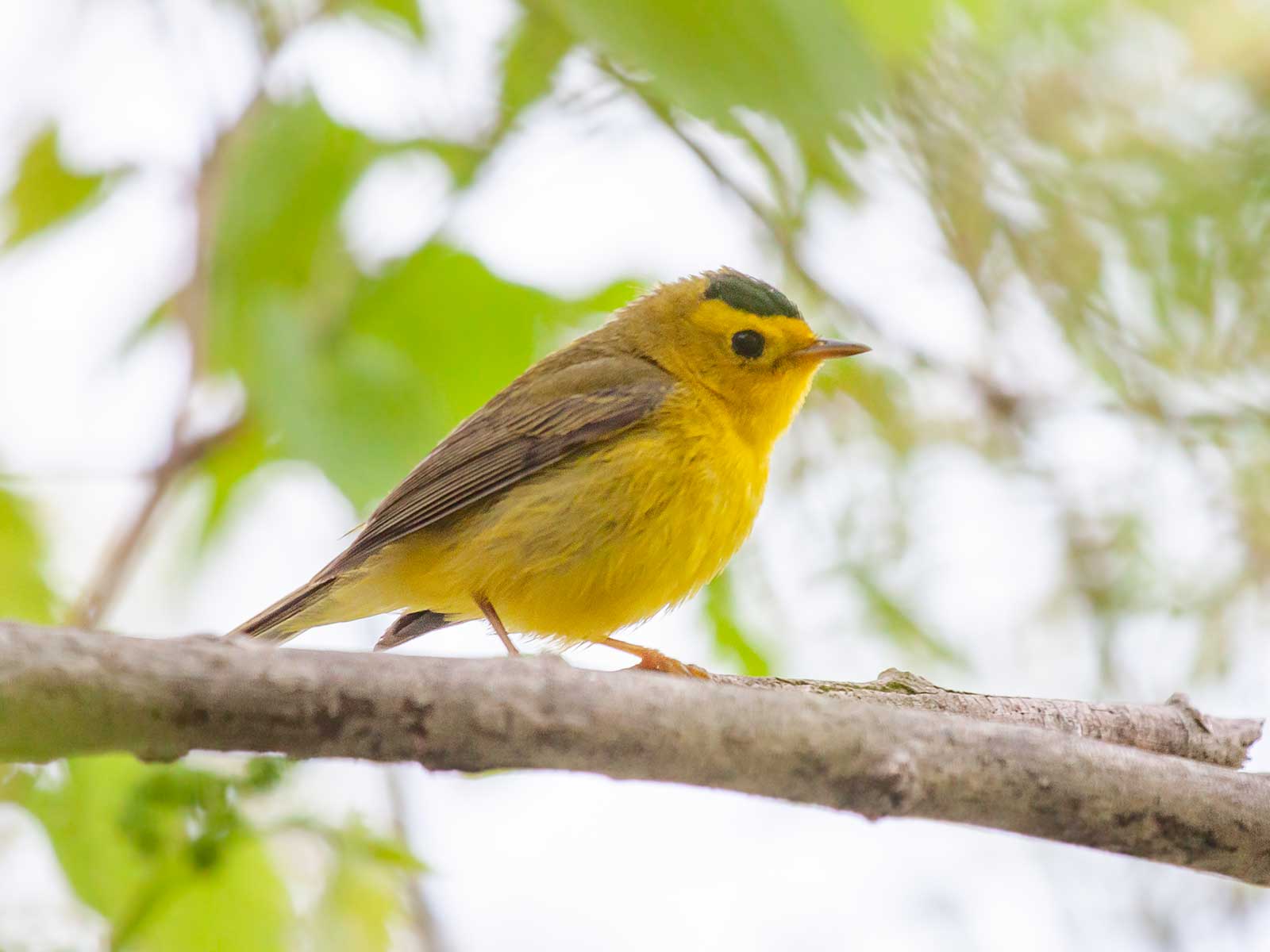
Yellow and shades of yellow seemed to be the favourite color of all the birds. It might be because the females find the colour more attractive or it is just because yellow is bright and visible. Wilson’s warbler was no exception.
Me and Mathi had visited Delaware the previous month for seeing the migration of waders. While Delaware was great with Red knots , Dunlins , Grey plovers, Oystercatchers etc , this experience was different. There the birds were in a group , moving together and feeding together. So even when we saw thousands of birds they were in a few countable groups , here it was like randomness to the core. The experience was much more immersive and interactive.
Having witnessed one of the great natural world spectacles I was so thrilled that I lost track of time and my appetite. After a snack I went for a few more rounds of birding around the Magee marsh wildlife area and by the end of the day, I was physically exhausted but mentally exuberant.
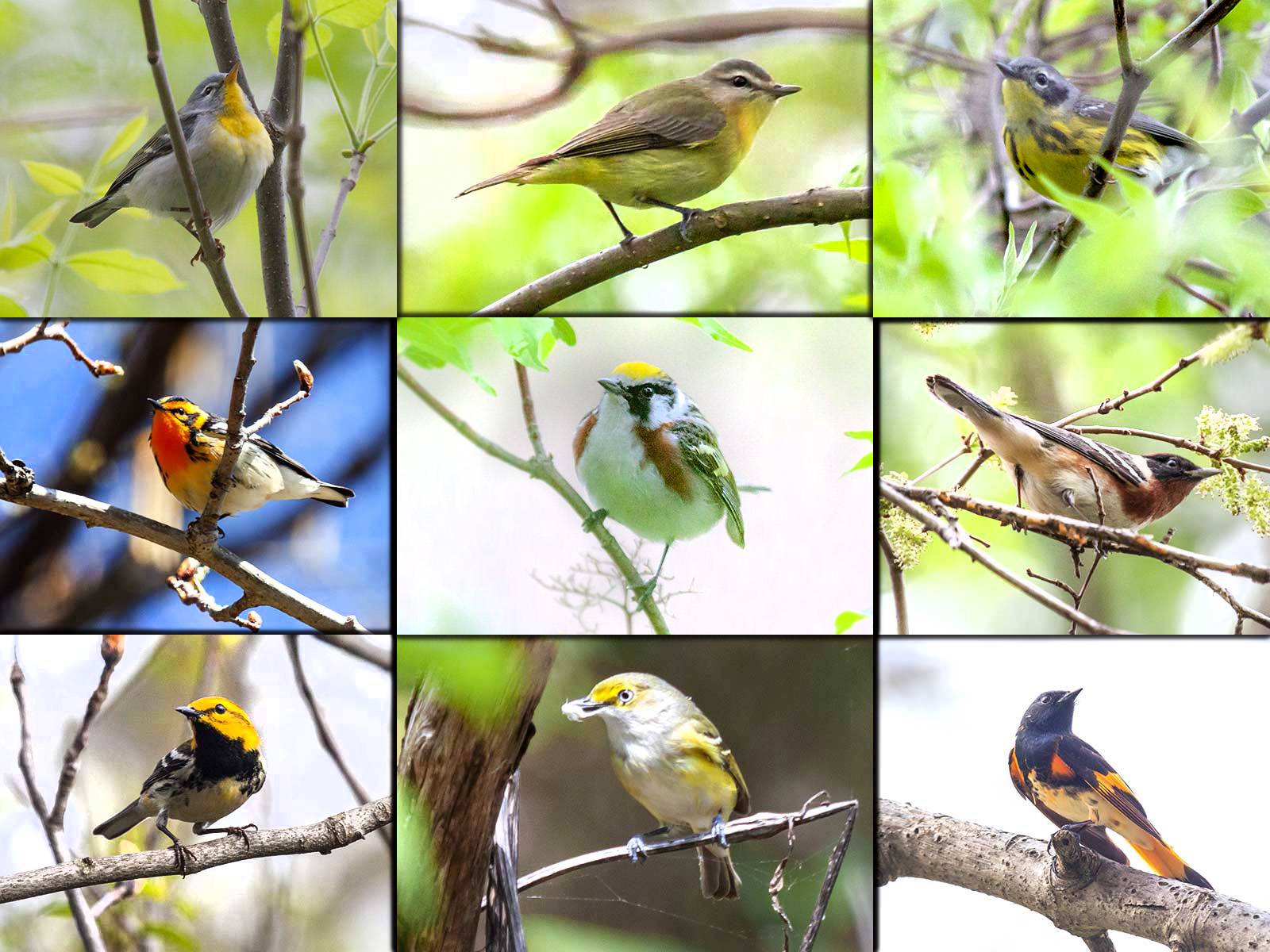
Top row (left to right) : Northern Parula ,Philadelphia Vireo, Kirtland’s Warbler Middle row (left to right) : Blackburnian warbler, Chestnut sided warbler , Bay breasted warbler – – Last row : Golden cheeked warbler , White eyed vireo , American redstart
I then returned back to tell the story to Mathi who had missed all the fun. We planned a visit after a day and to our disappointment and amazement , there was nothing. All were gone ! It is just amazing how the natural world works. We spotted a few warblers but it was nowhere close to what I saw. It seems this experience was meant only for me…for the time being.